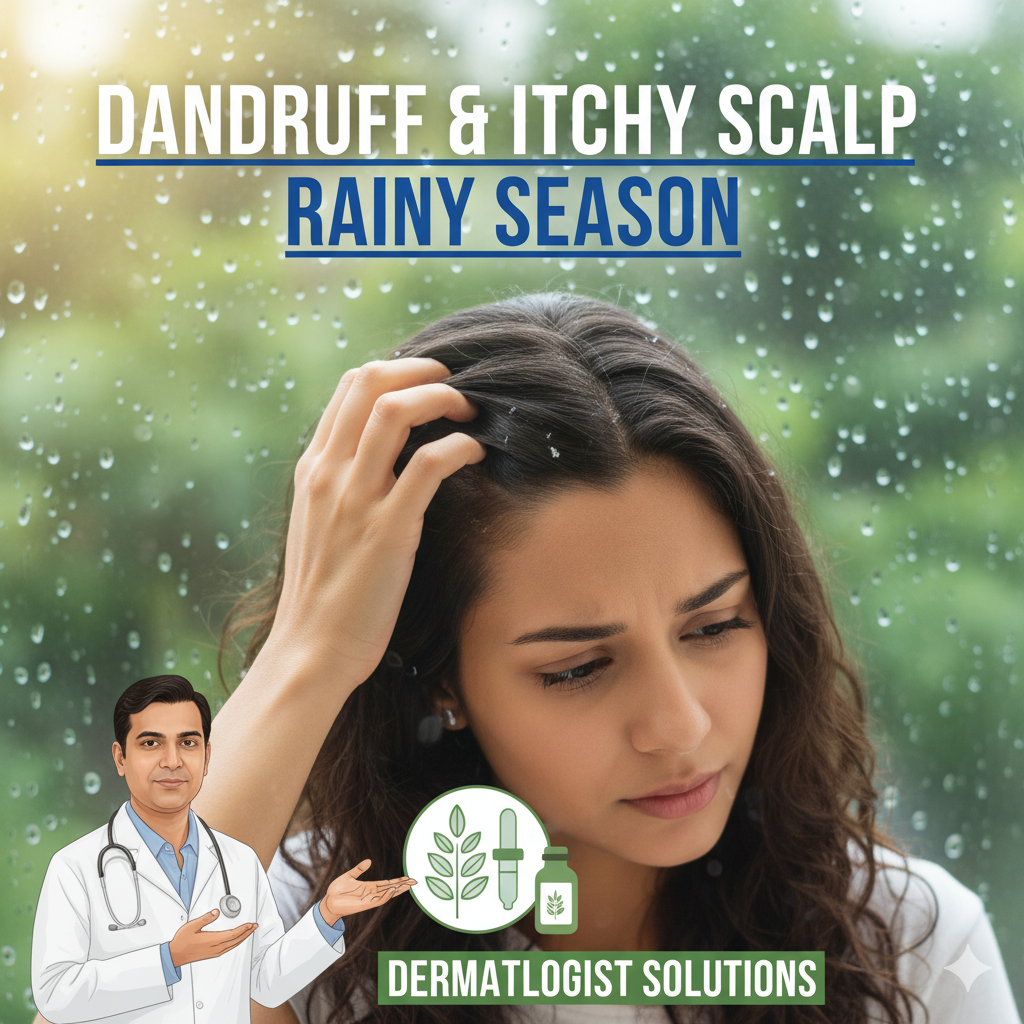The rainy season brings relief from the summer heat, but it often triggers dandruff, itchy scalp, and hair discomfort. High humidity, sweat, and damp conditions create the perfect environment for scalp issues. If you’ve noticed white flakes or persistent itch, here’s how dermatologists recommend keeping your scalp healthy. Why the Rainy Season Causes Dandruff High …
The rainy season brings relief from the summer heat, but it often triggers dandruff, itchy scalp, and hair discomfort. High humidity, sweat, and damp conditions create the perfect environment for scalp issues. If you’ve noticed white flakes or persistent itch, here’s how dermatologists recommend keeping your scalp healthy.
Why the Rainy Season Causes Dandruff
-
High Humidity: Moist conditions promote growth of Malassezia, a fungus causing dandruff.
-
Excess Oil Production: Oil traps dirt and dead skin cells, worsening flakes.
-
Sweat & Dust: Damp hair attracts dirt and pollutants, leading to irritation.
-
Fungal Infections: Humidity favors fungal growth, causing itchiness and inflammation.
How Dandruff Occurs: Understanding the Causes
Dandruff is not just annoying flakes falling on your shoulders—it’s a sign that your scalp is struggling with imbalance or irritation. Understanding why it happens is the first step to preventing it, especially during the rainy season.
1. Overgrowth of Fungus (Malassezia)
-
The scalp naturally hosts a fungus called Malassezia.
-
During humid and wet conditions, this fungus multiplies rapidly, feeding on the oils on your scalp.
-
The result? Flakes, itching, and irritation.
2. Excess Oil Production
-
Rainy weather and humidity can make your scalp produce more sebum (oil) than usual.
-
While oil is healthy in moderation, too much can trap dead skin cells, dirt, and fungi, leading to dandruff.
3. Dry or Dehydrated Scalp
-
Paradoxically, dandruff can also occur due to dryness, especially if you use harsh shampoos or wash hair too frequently.
-
Dry scalp flakes tend to be smaller, white, and more powdery than oily dandruff.
4. Irritation from Hair Products
-
Heavy oils, serums, or chemical-laden hair products can clog follicles, irritate the scalp, and worsen flaking.
-
This is especially common during rainy months when humidity traps product residues.
5. Environmental Factors
-
Rain, sweat, pollution, and dust can irritate the scalp, making it prone to flaking.
-
Damp conditions create the perfect environment for fungal overgrowth and bacterial activity, triggering dandruff.
When to Consult a Dermatologist
See a professional if you notice:
-
Persistent dandruff despite regular care
-
Severe itching, redness, or pus-filled bumps
-
Hair fall with scalp irritation
-
Thick, yellow, or oily flakes
Dermatologists may recommend medicated shampoos, topical treatments, or oral medications for stubborn cases.
Prevention Tips for the Rainy Season
-
Wash hair regularly but avoid over-washing
-
Don’t share combs or towels
-
Use a soft, clean towel to pat hair dry
-
Keep scalp ventilated whenever possible
-
Manage stress; it can worsen scalp conditions
Key Takeaways
-
Rainy season dandruff is common but manageable
-
Follow a consistent hair care routine
-
Use dermatologist-approved products
-
Maintain clean, dry hair and proper hygiene
-
A balanced diet and hydration support scalp health
With these steps, you can enjoy healthy, flake-free hair throughout the rainy season.







